Let’s wash away all our fears about using color with these 5 easy to implement tips for making your interior pop.
1. Choose a Complementary or Analogous Color Scheme
As you start down the road to choosing a color scheme, simplify the process by giving yourself only two options to choose from: complementary or analogous. Pull out your color wheel and let’s get to work.
Complementary color schemes are created by utilizing colors across from each other on the color wheel. Think red and green, blue and yellow, purple and orange. Through these combinations you will create a more formal environment that provides a defined separation of colors.

Photo: Houzz

Photo: Houzz
Analogous color schemes utilize colors next to each other on the color wheel. This time think yellow and green, blue and violet, red and orange to create a more casual setting. These color combinations are seamless evoking rest and relaxation.
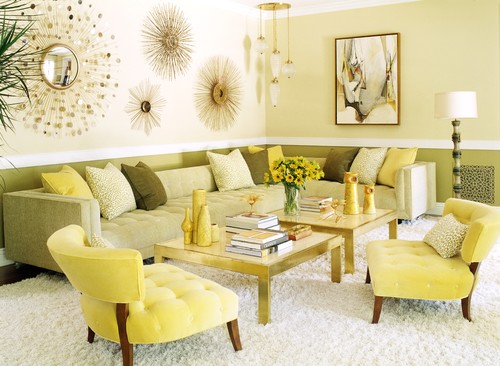
Photo: Houzz

Photo: Houzz
2. Develop a Flow
Consider utilizing a flow of color throughout your home. Choose one color that you love and use it in differing amounts in your adjoining spaces. For example, the home pictured here utilizes blue throughout several rooms to unify the home. Take notice of the various degrees of blue used and how it is always an accent color as to not overwhelm any one space.
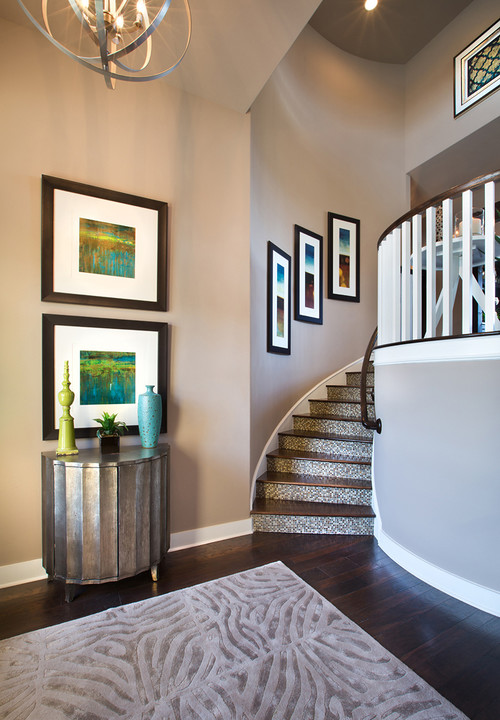
Photo: Houzz

Photo: Houzz
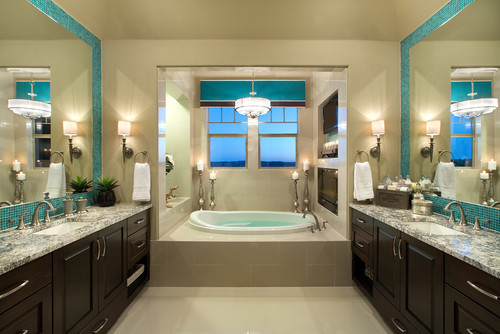
Photo: Houzz
3. Take Notice of Your Outside Environment
Do you reside in the Southwest, New England, the Pacific Coast? Choose colors that reflect the area in which you live. You can even study the color schemes of historical homes in your community and build a beautiful room by incorporating design and color schemes based on these historic models.
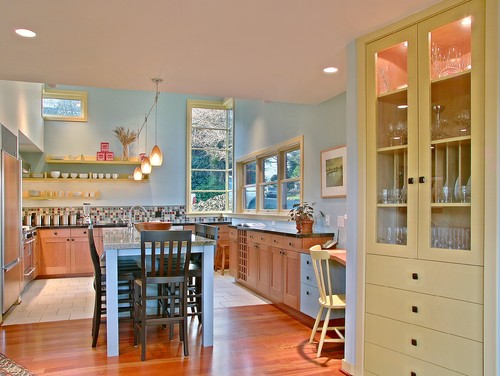
Photo: Houzz
The easiest environmental factor to observe is the current season. Each season brings forth its own color combinations that are acceptable inspiration for decorating. For example, spring normally embraces pinks, lilac and yellow for a bright, renewed look.

Photo: Houzz

Photo: Houzz
4. Use Black as an Accent
Choose a simple black element to add to any room. Any black accent will work well to clarify and enhance your chosen colors in any space. Get inspired with a black headboard in the bedroom, black paint on an accent wall or even a simple black lampshade.
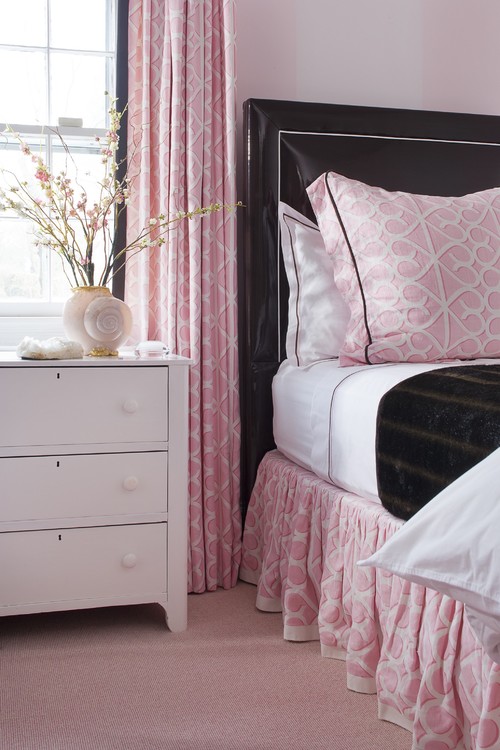
Photo: Houzz
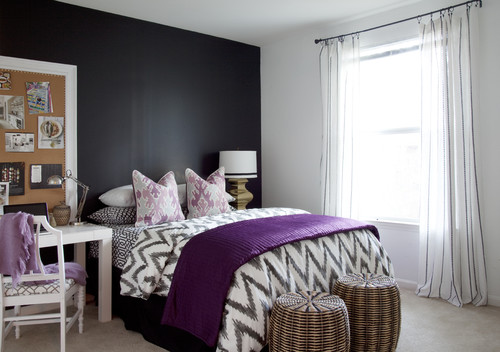
Photo: Houzz
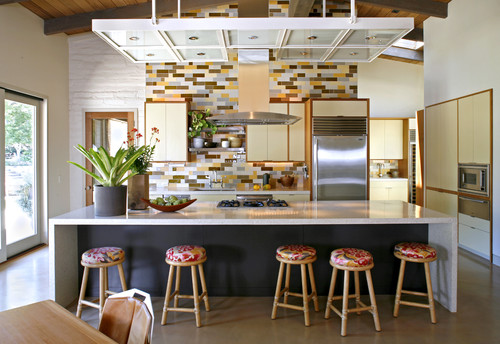
Photo: Houzz
5. Two Designs to Get You Started
If you are still not sure where to start when adding color to your space, get inspired by these two simple designs that will make any room beautiful and balanced with color.
The first example is based on the 60-30-10 rule which refers to three colors being used in varying percentages: 60% of your space is a dominant color, 30% is a secondary color that adds visual interest and 10% as an accent that adds a little spark. Instead of racking your brain to figure out how these percentages will breakdown in your space, start off with this simple formula:
Dominant color: paint your walls this color
Secondary color: upholstery or furnishings
Accent color: think small with items such as candles, flowers or coasters
This kitchen utilizes the kitchen cabinets to show off its secondary color.
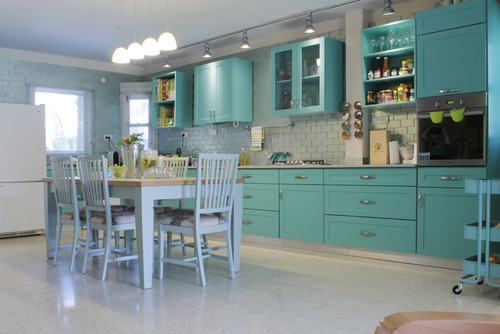
Photo: Houzz
The second example pulls directly from nature. People often speak of nature’s beauty so why not mimic the natural beauty of the great outdoors to create a balanced space. The goal here is to avoid one side of the room becoming too dark while the other side becomes too light. We accomplish this task by balancing the room from the floor up. Choose a dark shade for the floor, a medium shade for the walls and a light shade for the ceiling. If you prefer to keep your wall paint light, utilize wall art to create the balance. You will be visually mimicking the ground, the mountains or tree line and the sky. The perfect balance created by Mother Nature herself.
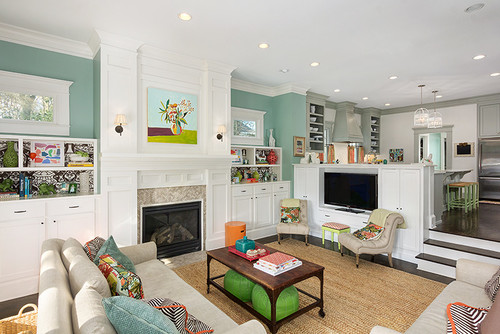
Photo: Houzz
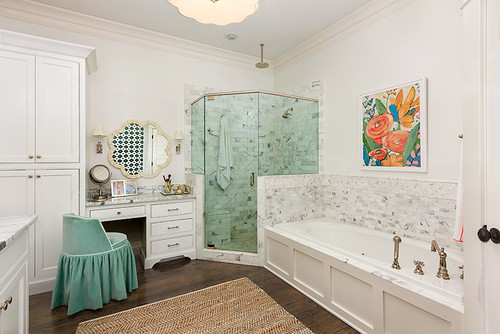
Photo: Houzz
Hopefully your fears of using color have been washed away, but if you still need some assistance in selecting the right color combination and design to make your home’s interior pop then contact the interior design experts at Decor & You.

